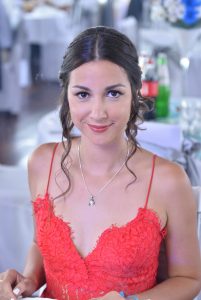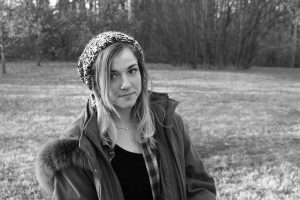In The Warmth of Other Suns: Stories of Displacement, many artists have created memorials for those who have left home, many of whom perished in their attempt to cross the Mediterranean and other bodies of water. Through sculpture and video, artists Adel Abdessemed, John Akomfrah, Meschac Gaba, and Runo Lagomarsino tackle our long, complicated relationship with the sea.
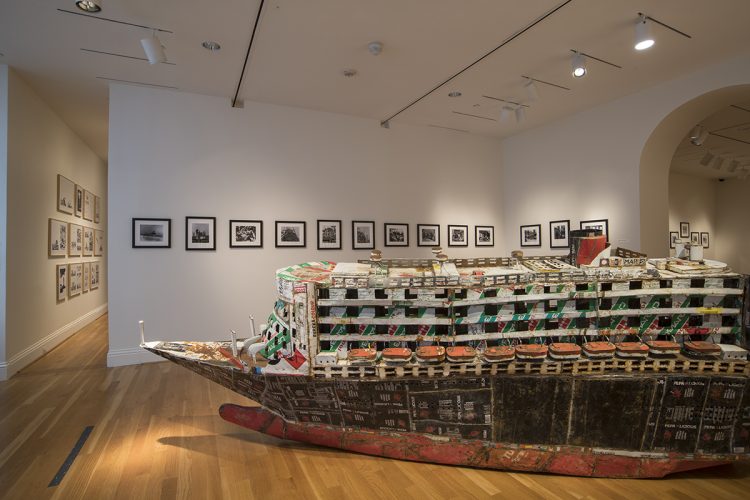
The Warmth of Other Suns installation view of Adel Abdessemed, Queen Mary II, La mère (The Mother), 2007, Metal, Private collection
Queen Mary II, La mère by Adel Abdessemed (1971, Constantine, Algeria; lives in Paris, France) seems like a restrained if grim take on an aspiration shared by many around the world. A tin model of the luxury cruise liner, Abdessemed’s boat paradoxically makes reference to inexpensive materials with the battered metal from which it is composed. The work’s title references the “queen mother” but also plays upon the French homonym of “mere” and “mer,” mother and sea, evoking both the sentiment of nostalgia and loss that comes with leaving one’s homeland—and, perhaps, mother—as well as the risk of sea voyage, which for many migrants crossing the Mediterranean is a harrowing and potentially tragic experience.
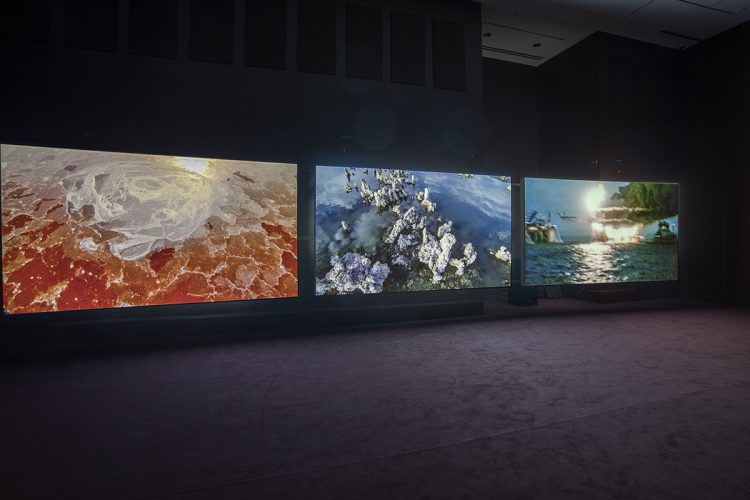
The Warmth of Other Suns installation view of John Akomfrah, Vertigo Sea, 2015, Three-channel HD video installation, 7.1 sound, color, © Smoking Dogs Films, Courtesy of Lisson Gallery, 48:30 min.
Vertigo Sea by John Akomfrah (1957, Accra, Ghana; lives in London, UK) creates parallels between the sea and migration, migration and whaling, and Moby Dick and slavery. Like the sea, the film’s aesthetic calm is interrupted by scenes of death. A bird dives swiftly into the water, spearing a school of fish. A man standing with his own spear is engulfed in the carcass of a bloody whale. Radio voices and archival footage narrate the voyages of Nigerian migrants, Vietnam War refugees, and victims of a 1781 slave ship massacre; none would have known each other, but all faced a similar struggle for survival at sea. Though the scale of the installation evokes a sense of despair, violence, and history, the film may be seen as a memorial that challenges the notion of the sea as a politically neutral space where only nature governs.
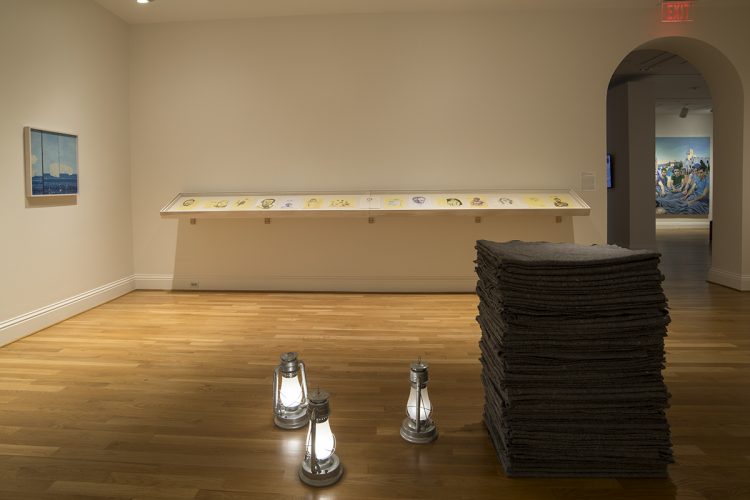
The Warmth of Other Suns installation view of Meschac Gaba, Mémorial aux Réfugiés Noyés (Memorial for Drowned Refugees), 2016, Blankets and 3 electric lanterns, Courtesy of the artist and Tanya Bonakdar Gallery, New York/Los Angeles
In Mémorial aux Réfugiés Noyés (Memorial for Drowned Refugees) by Meschac Gaba (1961, Cotonou, Benin; lives in Cotonou, Berlin, and Rotterdam, Netherlands), a pile of blankets and lanterns propose a simple memorial and reflect a common ritual that is performed in Benin when a loved one or family member has drowned at sea: the bereaved leave blankets and lamps on the shore for the spirit of the person lost, creating a beacon for his or her soul and ensuring that the spirit is kept warm. In sharing this tradition by way of his work, Gaba calls to mind not only the thousands who have died in attempting this passage, but also to the many thousands more who survive them and are left to mourn their deaths.
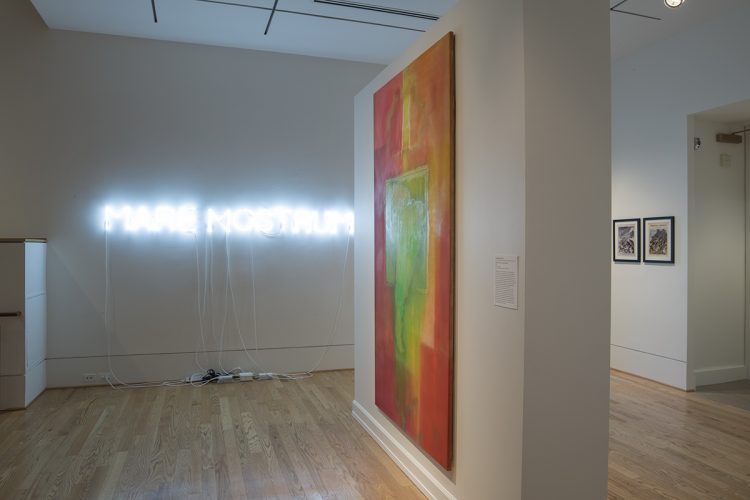
The Warmth of Other Suns installation view of Runo Lagomarsino, Mare Nostrum (Our Sea), 2016, Neon, Courtesy of the artist and Francesca Minini, Milan
Mare nostrum (Our Sea) by Runo Lagomarsino (1977, Lund, Sweden; lives in Malmö, Sweden, and Sao Paulo, Brazil) consists of the Latin phrase mare nostrum spelled out in neon, with a single shifting letter repeatedly leaving the viewer instead with mare mostrum. Mare nostrum (Our Sea), once the Roman name for the Mediterranean, resurfaced as fascist propaganda for Mussolini’s naval campaign as well as Italy’s recent “Operation Mare Nostrum,” a short-lived effort to rescue migrants across the Mediterranean. Mare mostrum (Monster Sea) is the artist’s formulation; this simple shift references the constant danger of crossing the Mediterranean by boat. Lagomarsino’s alteration of language illustrates how these two ways of representing the Mediterranean—the essence of European cultural heritage or a threatening barrier for migrants—are nearly interchangeable linguistically and visually, yet enormously different in their significance.
The Warmth of Other Suns: Stories of Global Displacement is on view through September 22.

